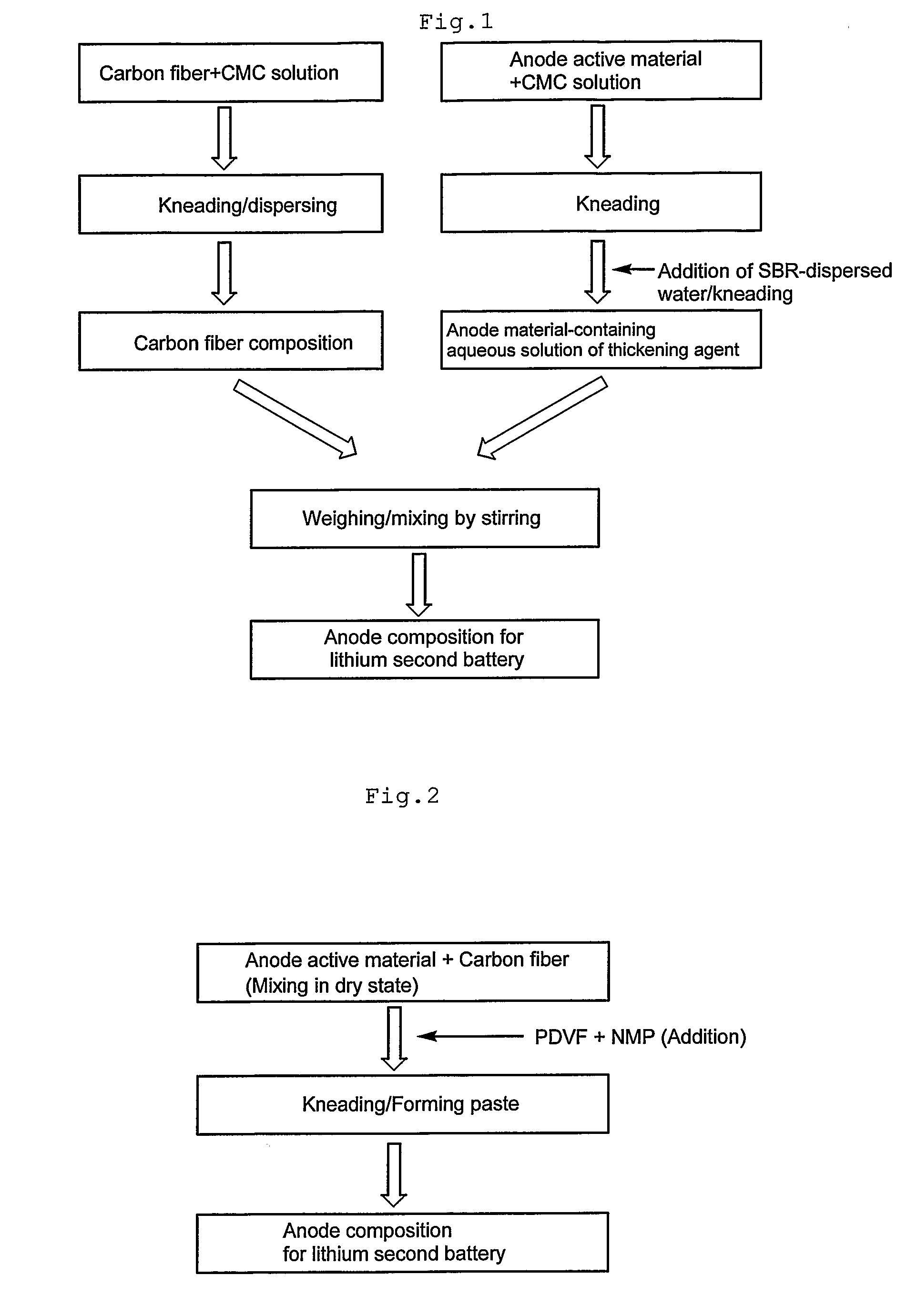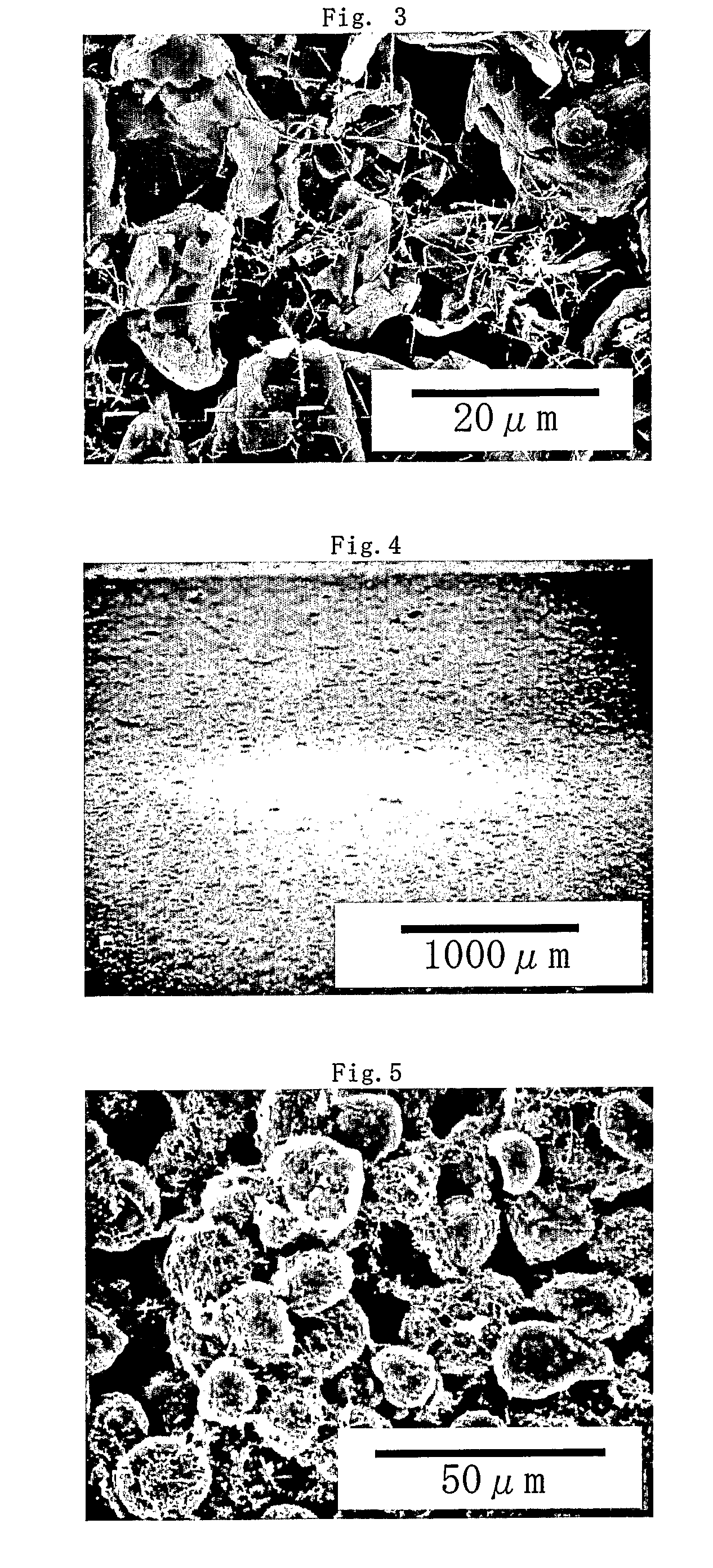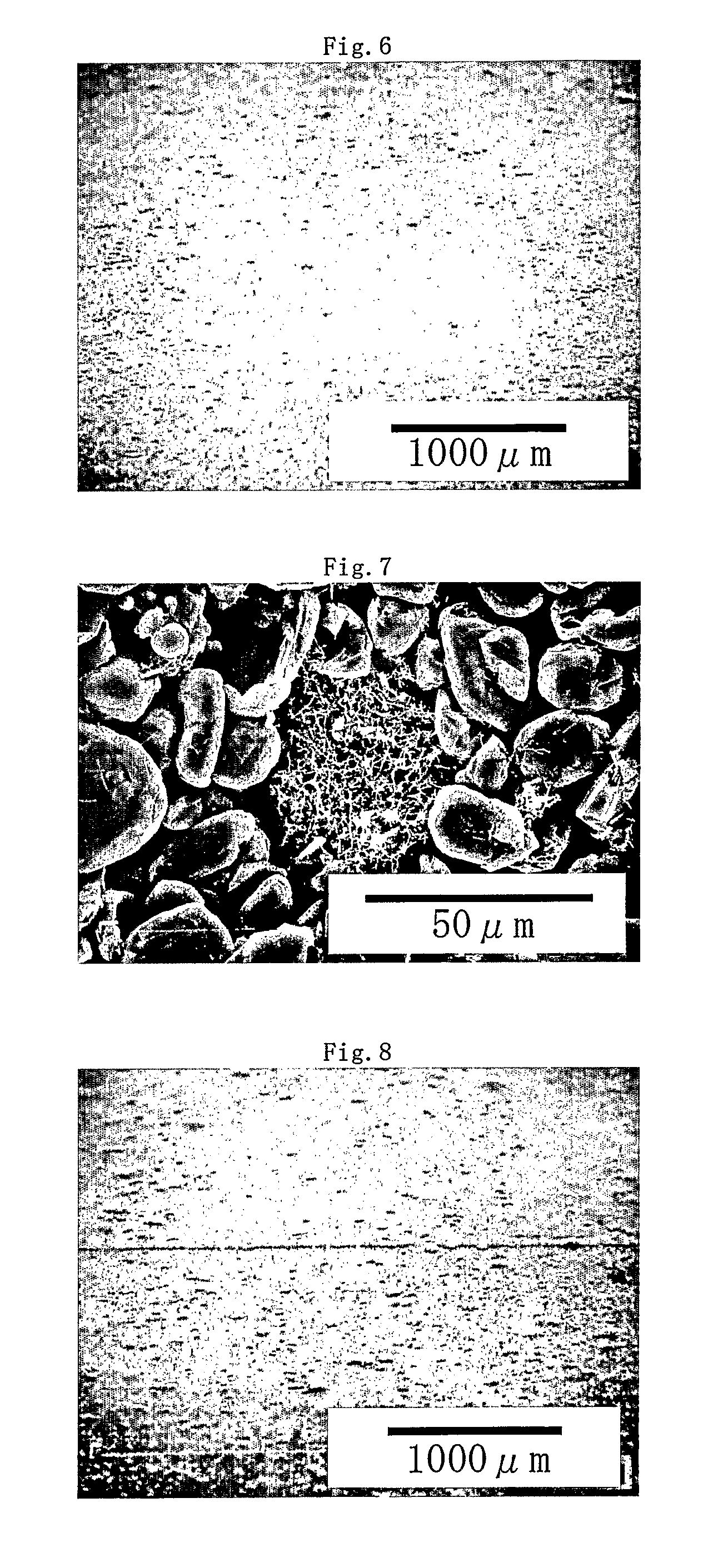Method for producing anode for lithium secondary battery and anode composition, and lithium secondary battery
a secondary battery and lithium battery technology, applied in the field of lithium secondary batteries, can solve the problems of reducing battery capacity, difficult to apply natural graphite, significant deterioration of coatability, etc., and achieve excellent electroconductivity, large-current characteristics, and uniform dispersion.
- Summary
- Abstract
- Description
- Claims
- Application Information
AI Technical Summary
Benefits of technology
Problems solved by technology
Method used
Image
Examples
example 1
[0176]As a 1 mass % aqueous solution of CMC prepared in advance was portionwise added to 20 g of VGCF, kneading was conducted with a multi-purpose blender, T.K. HIVIS MIX (registered trademark) f-model 03 (produced by PRIMIX Corporation) for 90 minutes. As a result, a carbon fiber-containing composition containing 8.5 mass % of VGCF was prepared. The viscosity of this solution was 4000 mPa·sec.
[0177]As a 1 mass % aqueous solution of CMC prepared in advance was portionwise added to 70 g of spherical natural graphite LB-CG, kneading was conducted with a multi-purpose blender, T.K. HIVIS MIX (registered trademark) f-model 03 for 2 hours. As a result, a CMC solution containing 50 mass % of spherical natural graphite LB-CG was prepared. To this solution, SBR-dispersed water BM-400B was added so that SBR solid content was 1.5 mass %, and kneaded for 1 hour. The viscosity of this thickening agent solution containing anode material was 3500 mPa·sec.
[0178]Next, the carbon fiber-containing co...
example 2
[0181]An 1 mass % aqueous solution of CMC which had been prepared in advance was portionwise added to 70 g of massive artificial graphite SCMG-A while kneading was conducted with a multi-purpose blender, T.K. HIVIS MIX (registered trademark) f-model 03 for 2 hours. As a result, a CMC solution containing 60 mass % of massive artificial graphite SCMG-A was prepared. To this solution, SBR-dispersed water BM-400B was added so that SBR solid content was 1.5 mass %, and kneaded for 1 hour. The viscosity of this thickening agent solution containing anode material was 3000 mPa·sec.
[0182]The other procedures were conducted in the same way to thereby prepare an anode for lithium secondary battery.
[0183]The obtained anode was observed by using an scanning electronic microscope in the same manner as in Example 1, carbon fiber was well dispersed in the anode material and no agglomerate of carbon fiber having a diameter exceeding 10 μm was observed.
example 3
[0184]1 mass % of B4C was added to VGCF and by using small-size graphitization furnace (produced by KABUSHIKI KAISHA SAN RIKO DENKI), thermal treatment was conducted at 2800° C. in an argon gas flow. After cooling and collecting, d(002) measured by powder X-ray diffraction method was 0.3376 nm. By using this product of boron-treated VGCF, an anode for lithium secondary battery was prepared in the same method as in Example 1.
[0185]The obtained anode was observed by using an scanning electronic microscope in the same manner as in Example 1, carbon fiber was well dispersed in the anode material and no agglomerate of carbon fiber having a diameter exceeding 10 μm was observed.
PUM
| Property | Measurement | Unit |
|---|---|---|
| diameter | aaaaa | aaaaa |
| diameter | aaaaa | aaaaa |
| particle size | aaaaa | aaaaa |
Abstract
Description
Claims
Application Information
 Login to View More
Login to View More - R&D
- Intellectual Property
- Life Sciences
- Materials
- Tech Scout
- Unparalleled Data Quality
- Higher Quality Content
- 60% Fewer Hallucinations
Browse by: Latest US Patents, China's latest patents, Technical Efficacy Thesaurus, Application Domain, Technology Topic, Popular Technical Reports.
© 2025 PatSnap. All rights reserved.Legal|Privacy policy|Modern Slavery Act Transparency Statement|Sitemap|About US| Contact US: help@patsnap.com



